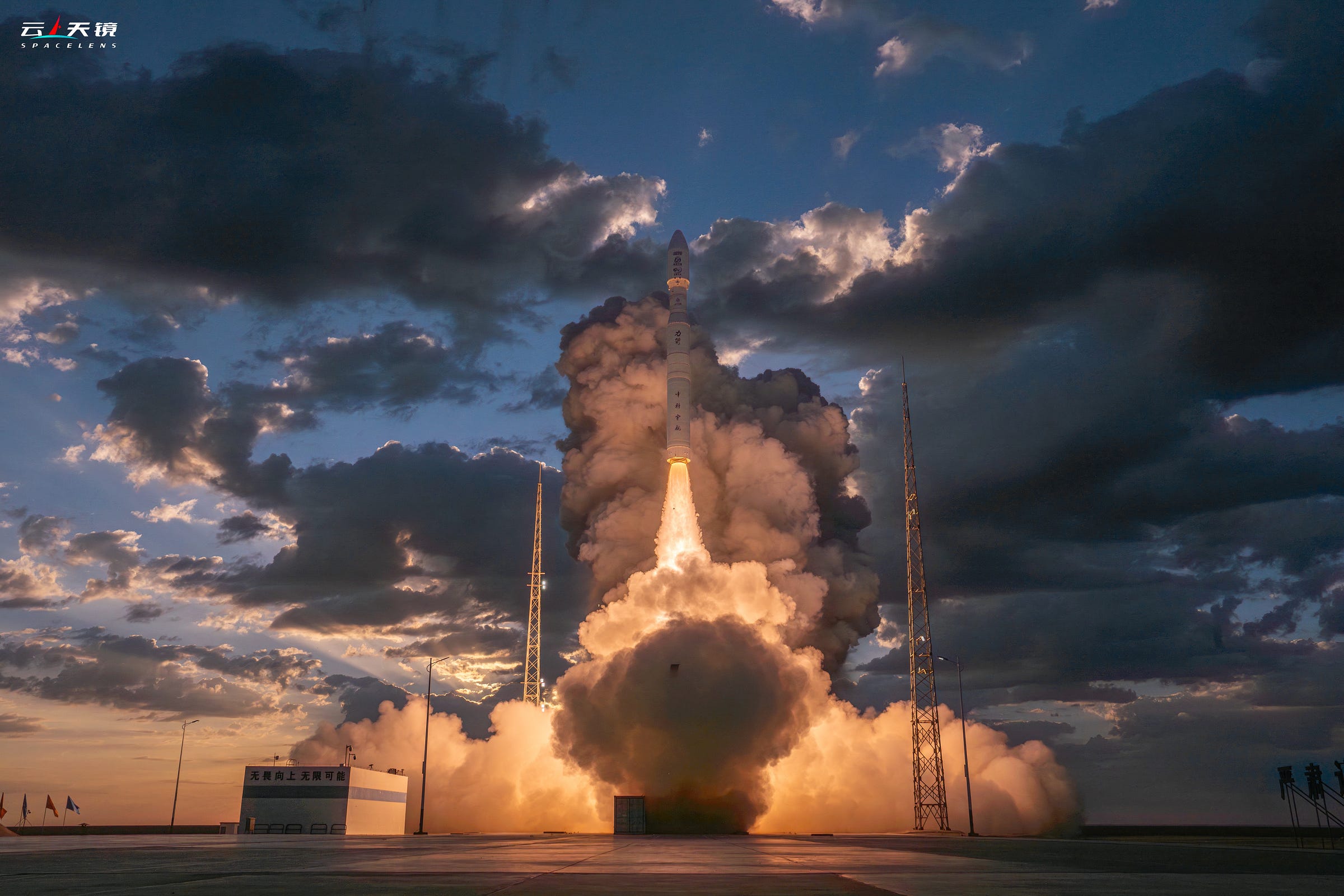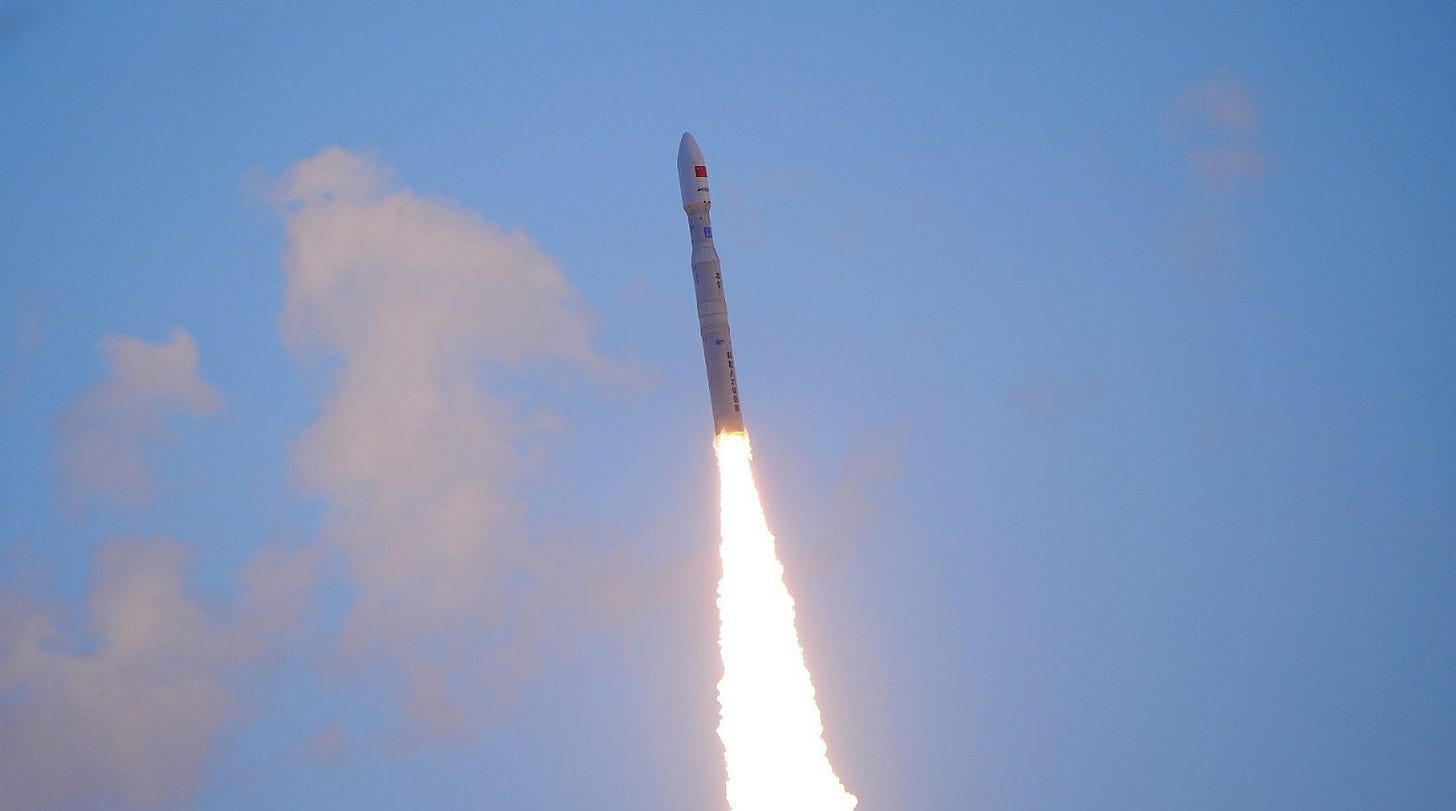Business is good for CAS Space [Kinetica-1 Y4]
CAS Space has launched another Kinetica-1 rocket carrying five customers satellites.

CAS Space launched its fourth Kinetica-1 vehicle on September 25th at 07:33 am China Standard Time, or on the 24th at 11:33 pm Universal Coordinated Time, from Launch Site 130 at the Jiuquan Satellite Launch Center, located in the Inner Mongolia Autonomous Region in northern China, into a sun-synchronous orbit.
Riding atop of the vehicle today were five satellites for three customers.
Zhongke-1 01 (中科卫星01) and Zhongke-1 02 (中科卫星02) are the first two satellites of China Science and Technology Satellite’s (中科卫星) AIRSAT constellation. These two satellites are Ku-band synthetic aperture radar spacecraft with an imaging resolution of approximately 1 meter.
Once commissioned on orbit, they will provide data for agriculture, disaster prevention, urban planning, and natural resource utilization. The satellites also utilized a ‘flat-panel’ design, possibly allowing for large batch deployments in the future like the Shanghai-backed Qianfan constellation or SpaceX’s Starlink constellation.
Yunyao-1 21 (云遥一号21) and Yunyao-1 22 (云遥一号22) are meteorological remote sensing satellites from Tianjin Yunyao Aerospace Technology (功将天津云遥宇航科) as part of the company’s meteorological satellite constellation. This constellation provides data for atmospheric temperature, humidity, pressure, and ionospheric electron density. With the satellites, the company assists in improving weather forecasts.
Tianjin Yunyao Aerospace Technology plans to eventually have ninety of these satellites in orbit for its constellation to provide accurate real-time data on weather worldwide. Forty satellites are expected to be placed into orbit in 2024, with five satellite batches launched this year bringing the total up to twenty-four.
Jilin-1 SAR01A (吉林一号SAR01A) is part of the Jilin-1 (吉林一号) constellation and was developed by Changguang Satellite Technology (长光卫星技术股份有限公司). The spacecraft is another remote-sensing satellite that will utilize X-band observations to achieve sub-meter imaging resolution in all weather conditions at any point in the day.
Following the launch, CAS Space took to social media to celebrate saying:
“Kinetica-1 Mission Y4 is officially declared a perfect success. The mission carries five satellites Zhongke-01/02, Jilin SAR01A, and Yunyao-21/22 into orbits with high accuracy, again exceeding the standard.”
The company also added that two more Kinetica-1 missions are targeting launch this year. If these missions do occur CAS Space will have launched four times in 2024. An increase in Kinetica-1’s cadence is also expected in 2025, along with the debut of the partially reusable Kinetica-2. When CAS Space was speaking to CGTN it was stated that this could be between eight to ten launches in 2025.
When I spoke with CAS Space back in August, the company told me that they expect to continue flying Kinetica-1 while introducing Kinetica-2 as both vehicles are capable of sustaining the company financially with current market demand, both in China and internationally, from satellite manufacturers, government entities, and research institutions.
So far CAS Space has delivered forty-two satellites into orbit using Kinetica-1. This was also the fourth successful launch of a Kinetica-1 vehicle, also being the aforementioned fourth overall, and the 45th launch from China this year.
Launch footage via CAS Space, China航天, and 北京蓝龙.
Check out the previous launch from CAS Space
Kinetica-1 succeeds for the third time in a row [Kinetica-1 Y3]
Early on the 23rd of January, CAS Space launched its first mission of the year carrying five satellites atop of its Kinetica-1 rocket. The Kinetica-1 rocket lifted off from Launch Area 130 at the Jiuquan Satellite Launch Center and flew to a sun-synchronous orbit of the Earth.
What is Kinetica-1?
This section is for those less familiar with China's various commercial launch vehicles.
Kinetica-1 is CAS Space's first launch vehicle and consists of four stages, all burning solid fuel. CAS Space offers the ability to launch a single satellite to utilize all of the rocket's payload capacity, however more 'rideshare' missions occur for multiple satellites to be delivered in one launch.

The payload capacity of the launch vehicle is currently as follows:
2,000 kilograms to low Earth orbit
1,500 kilograms to a 500-kilometer sun-synchronous orbit
The first-stage is powered by a solid rocket booster that burns an unspecified solid fuel, generating 200 tons of thrust. The second-stage is also powered by a solid rocket booster, producing 110 tons of thrust with the same unidentified propellant. The-third stage, also using the undisclosed propellant, generates 110 tons of thrust. Finally, the fourth-stage is powered by another solid rocket booster, providing 8 tons of thrust with the same solid propellant.
On its launch pad, Kinetica-1 stands at 30 meters tall. The first two stages and fairing have a diameter of 2.65 meters. When prepared for launch Kinetica-1 weighs a believed 135,000 kilograms.
So far Kinetica-1 has flown all of its missions from CAS Space’s launch facility at the Jiuquan Satellite Launch Center.




![Kinetica-1 succeeds for the third time in a row [Kinetica-1 Y3]](https://substackcdn.com/image/fetch/$s_!IAZu!,w_1300,h_650,c_fill,f_auto,q_auto:good,fl_progressive:steep,g_auto/https%3A%2F%2Fsubstack-post-media.s3.amazonaws.com%2Fpublic%2Fimages%2F43101fd1-b62b-4b1a-b6bd-128fd0f9ba04_600x338.avif)